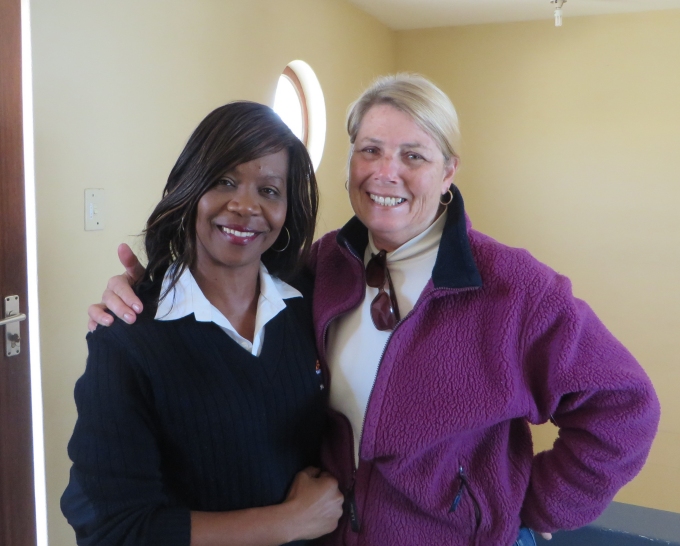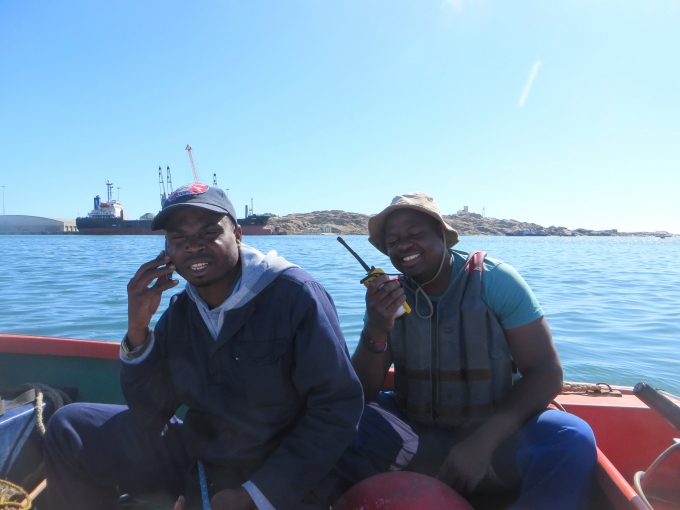The Blue View - Small Town Lüderitz
/Both Marcie and I have lived in small towns where everybody, if not actually related, knows everyone else. Lüderitz, with a population of only 12,537, is the epitome of a small town. Even by small town standards, however, we are amazed at all the connections between the people we've met. Perhaps it's because the town is not only small, but very isolated and very hospitable. People that are born here tend to stay, and people that stop here for a short stay often end up remaining for decades. Did I mention it is a friendly town? We've been in Lüderitz about a month now, and have at least 8-10 new friends whom we see regularly. We are also on a first name basis with about 20 or so people, and probably know an equal number well enough to wave at and say hello.
Evaldine, the port authority official who checked us into the port and has been so helpful sorting out various issues for us, has known our good friend Ian since she was a girl.
Ian is the local marine surveyor and was formerly a yachtie, merchant mariner and the port captain, and is married to Doris. Doris is an ex-pat German, who completed a circumnavigation a decade or so ago on her yacht, during which she met Ian.
Our friend Liz manages a tour agency and gift shop and we've shared many a meal at her home with mutual friends.
She rents a house from Paul, who is an offshore diamond miner. Paul and Ingrid were also yachties who did their circumnavigation in 2002-2005, and who rent another small house, actually a transplanted boat to Andy, yet another yachtie who spends most of his days on his trimaran which is moored just feet from Nine of Cups.
Giggs, the dive crew chief for the diver that checked a mooring for us, is Evaldine's nephew. And so on …
Of our new friends, an amazing number were yachties, several of whom have sailed around the world on their sailboats. They are Namibians and, except for Doris, started and ended their travels here. An adventurous group of people, and undoubtedly the highest per capita number of circumnavigators in any town we've visited.
Now that we've been sailing a few years, we've discovered that the yachtie community is also very much like a small town, and whenever we meet new yachties, a frequent topic of conversation is who we know in common. “You were in Tonga in 2004? Did you meet … while you were there?”. Our new yachtie friends in Lüderitz were no exception, and it turns out we have a dozen or so mutual friends and acquaintances. Several of our other cruising friends also emailed us, and asked us to be sure to “say hi to …, we met them in Ecuador (or Uruguay or the South Pacific) in ...”.
And did I mention friendly? We will be reluctantly departing in the next few days, but I am sure Lüderitz and its warm friendly people will always be one of our favorite ports of call.













